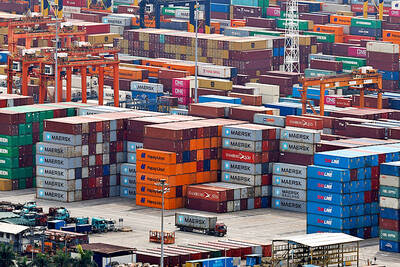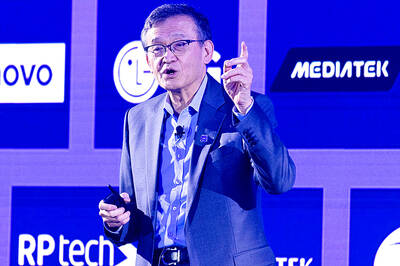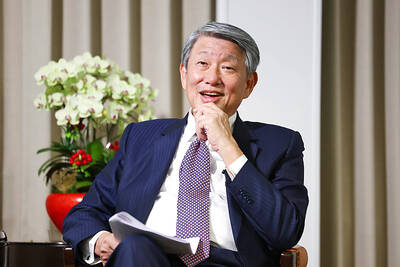Amazon.com Inc saw earnings grow in the third quarter as shoppers bought more goods and services, yet costs also rose because the company is having to build new centers to fulfill those orders. Shares fell in extended trading.
For the July-to-September quarter, Amazon earned US$231 million, or US$0.51 per share — US$0.03 more than what analysts polled by Thomson Reuters expected, on average. That compares with a profit of US$199 million, or US$0.45 per share, a year earlier.
Revenue rose 39 percent to US$7.56 billion, higher than the US$7.36 billion analysts expected. It was US$5.45 billion a year ago, a quarter that doesn’t reflect the November purchase of shoes and apparel retailer Zappos.
Amazon reported on Thursday that revenue from its largest sales category, electronics and other general merchandise, jumped 68 percent to US$3.97 billion. Revenue from books, CDs, DVDs and other media grew 14 percent to US$3.35 billion.
The Seattle-based company, which has never given precise details about sales of its Kindle electronic reader, said that a larger number of its latest Kindle devices were ordered in the first 12 weeks it was available than in the same amount of time after any other Kindle launch. The newest Kindle, which was priced more cheaply at US$139 and uses Wi-Fi to wirelessly download content from Amazon’s Kindle Store, was released during the quarter.
Amazon said that its combined fulfillment, technology and content and marketing costs rose 47 percent to US$1.36 billion. Its fulfillment costs climbed 46 percent to US$680 million.
In a call with reporters, the company’s chief financial officer Tom Szkutak said costs rose because of 13 centers Amazon has opened or will open this year to fill customer orders, both for its own retail business and for its business of filling orders for other sellers.
The company’s marketing spending also jumped, climbing 62 percent to US$241 million. Amazon, which generally focuses on advertising online, has been branching out by running commercials for the Kindle.
Amazon has cemented its position as the e-commerce leader by offering lower prices than other retailers both on and off the Web, and it clearly isn’t planning to change this to make up for higher expenses.
“The way we think about pricing is we want to make sure we have great prices on a year-round basis, in all the categories and all the geographies we offer, and that’s something we work hard to do,” Szkutak said.
For this quarter, Amazon predicted revenue will total US$12 billion to US$13.3 billion — a range that would indicate 26 percent to 40 percent growth over last year’s fourth quarter.
Analysts were looking for US$12.3 billion in revenue.
However, Amazon also indicated that its operating income could fall as much as 24 percent to US$360 million or rise as much as 18 percent to US$560 million in the quarter, which means expenses are still likely to rise.
Larry Witt, a Morningstar Inc analyst, said the level of expenses for both quarters puts a damper on things.
“They’re still growing fast, but people are probably getting anxious to see operating leverage,” he said.
Amazon’s stock fell US$6.47, or 3.9 percent, to US$158.50 in after-hours trading after the release of results. The shares had finished regular trading up US$6.30, or 4 percent, at US$164.97.

Nvidia Corp CEO Jensen Huang (黃仁勳) today announced that his company has selected "Beitou Shilin" in Taipei for its new Taiwan office, called Nvidia Constellation, putting an end to months of speculation. Industry sources have said that the tech giant has been eyeing the Beitou Shilin Science Park as the site of its new overseas headquarters, and speculated that the new headquarters would be built on two plots of land designated as "T17" and "T18," which span 3.89 hectares in the park. "I think it's time for us to reveal one of the largest products we've ever built," Huang said near the

China yesterday announced anti-dumping duties as high as 74.9 percent on imports of polyoxymethylene (POM) copolymers, a type of engineering plastic, from Taiwan, the US, the EU and Japan. The Chinese Ministry of Commerce’s findings conclude a probe launched in May last year, shortly after the US sharply increased tariffs on Chinese electric vehicles, computer chips and other imports. POM copolymers can partially replace metals such as copper and zinc, and have various applications, including in auto parts, electronics and medical equipment, the Chinese ministry has said. In January, it said initial investigations had determined that dumping was taking place, and implemented preliminary

Intel Corp yesterday reinforced its determination to strengthen its partnerships with Taiwan’s ecosystem partners including original-electronic-manufacturing (OEM) companies such as Hon Hai Precision Industry Co (鴻海精密) and chipmaker United Microelectronics Corp (UMC, 聯電). “Tonight marks a new beginning. We renew our new partnership with Taiwan ecosystem,” Intel new chief executive officer Tan Lip-bu (陳立武) said at a dinner with representatives from the company’s local partners, celebrating the 40th anniversary of the US chip giant’s presence in Taiwan. Tan took the reins at Intel six weeks ago aiming to reform the chipmaker and revive its past glory. This is the first time Tan

CUSTOMERS’ BURDEN: TSMC already has operations in the US and is a foundry, so any tariff increase would mostly affect US customers, not the company, the minister said Taiwanese manufacturers are “not afraid” of US tariffs, but are concerned about being affected more heavily than regional economic competitors Japan and South Korea, Minister of Economic Affairs J.W. Kuo (郭智輝) said. “Taiwan has many advantages that other countries do not have, the most notable of which is its semiconductor ecosystem,” Kuo said. The US “must rely on Taiwan” to boost its microchip manufacturing capacities, Kuo said in an interview ahead of his one-year anniversary in office tomorrow. Taiwan has submitted a position paper under Section 232 of the US Trade Expansion Act to explain the “complementary relationship” between Taiwan and the US